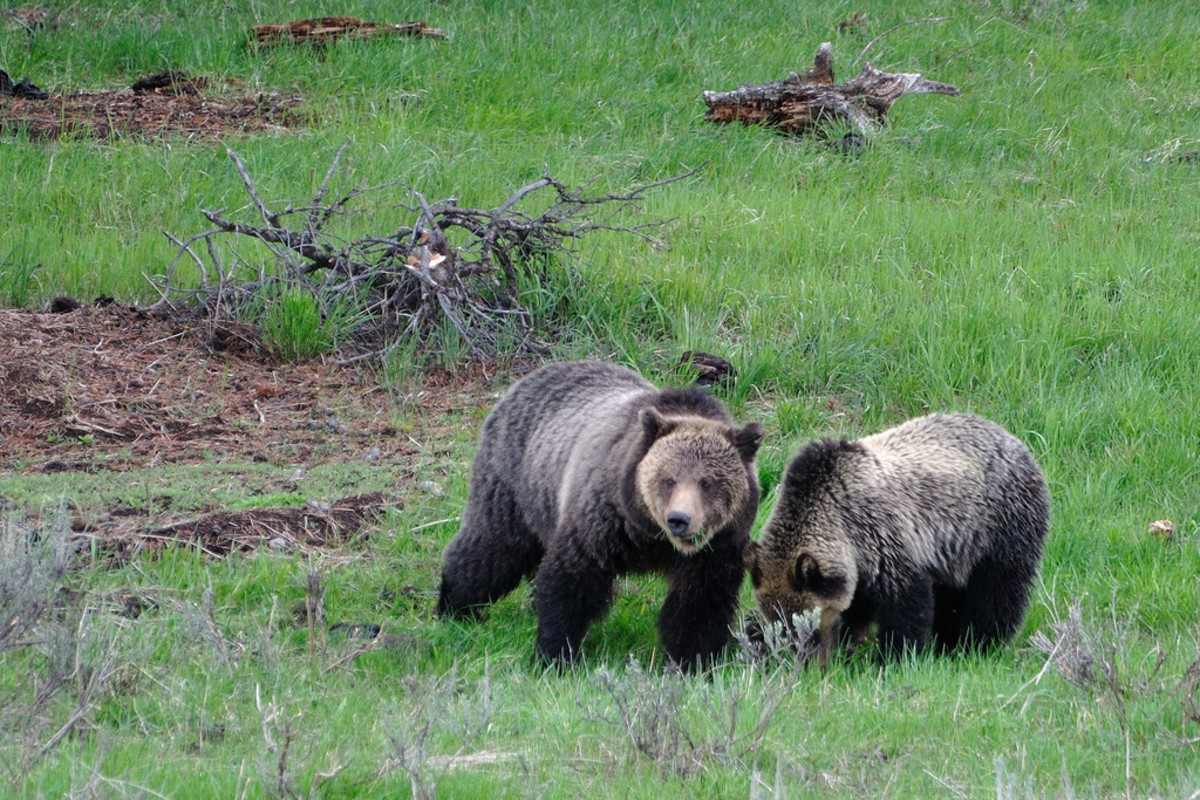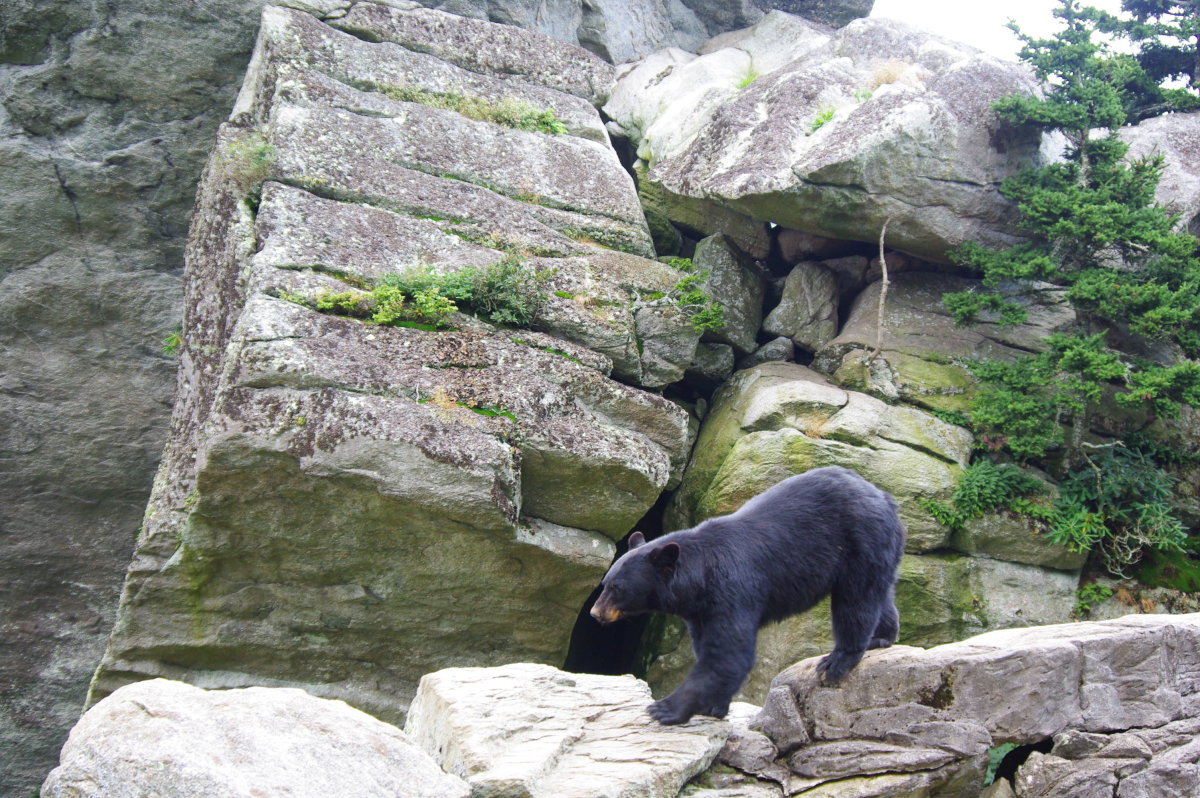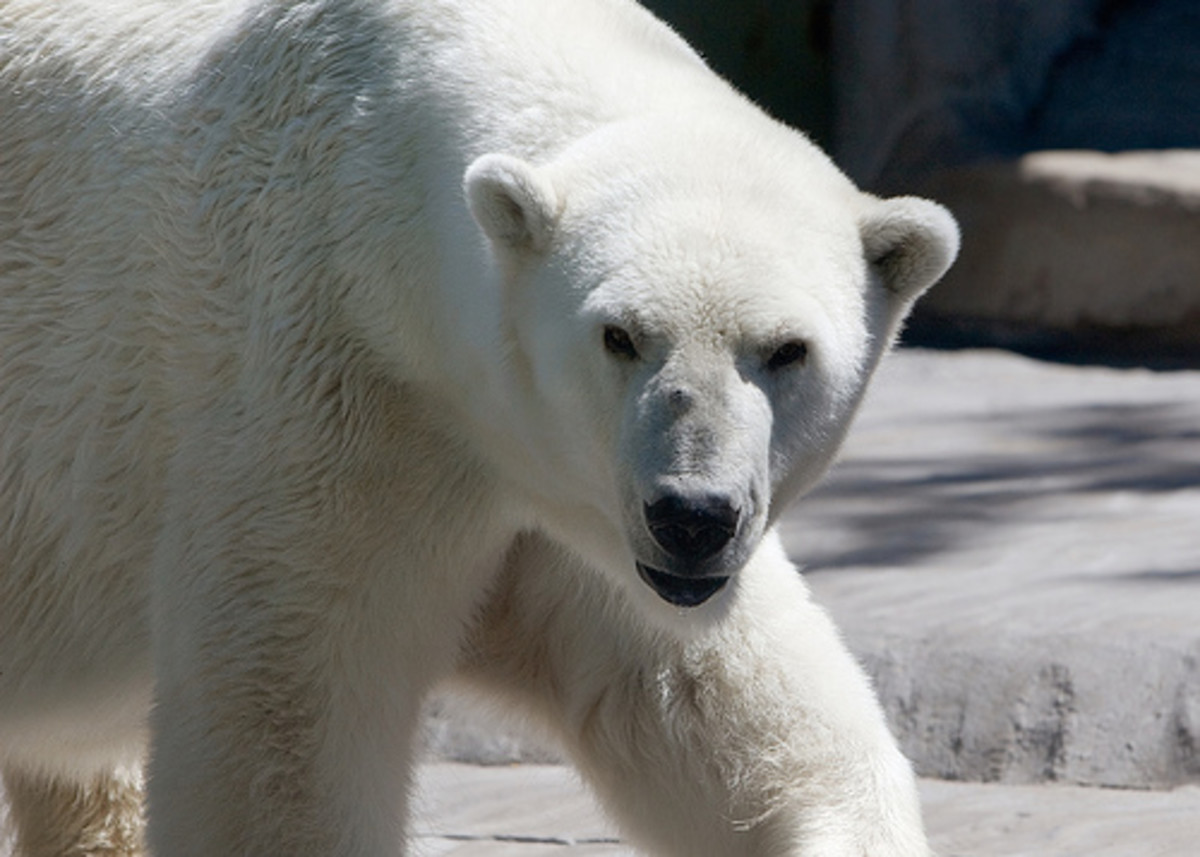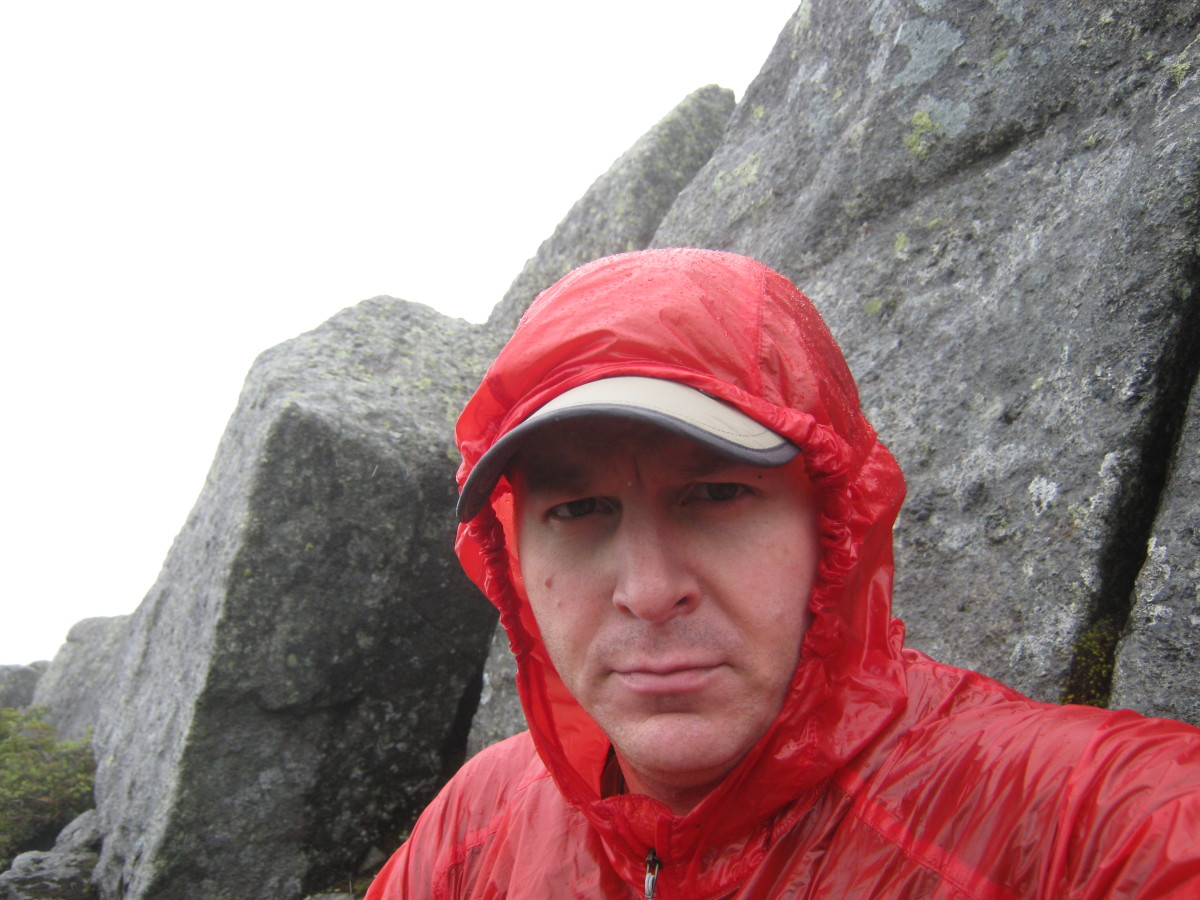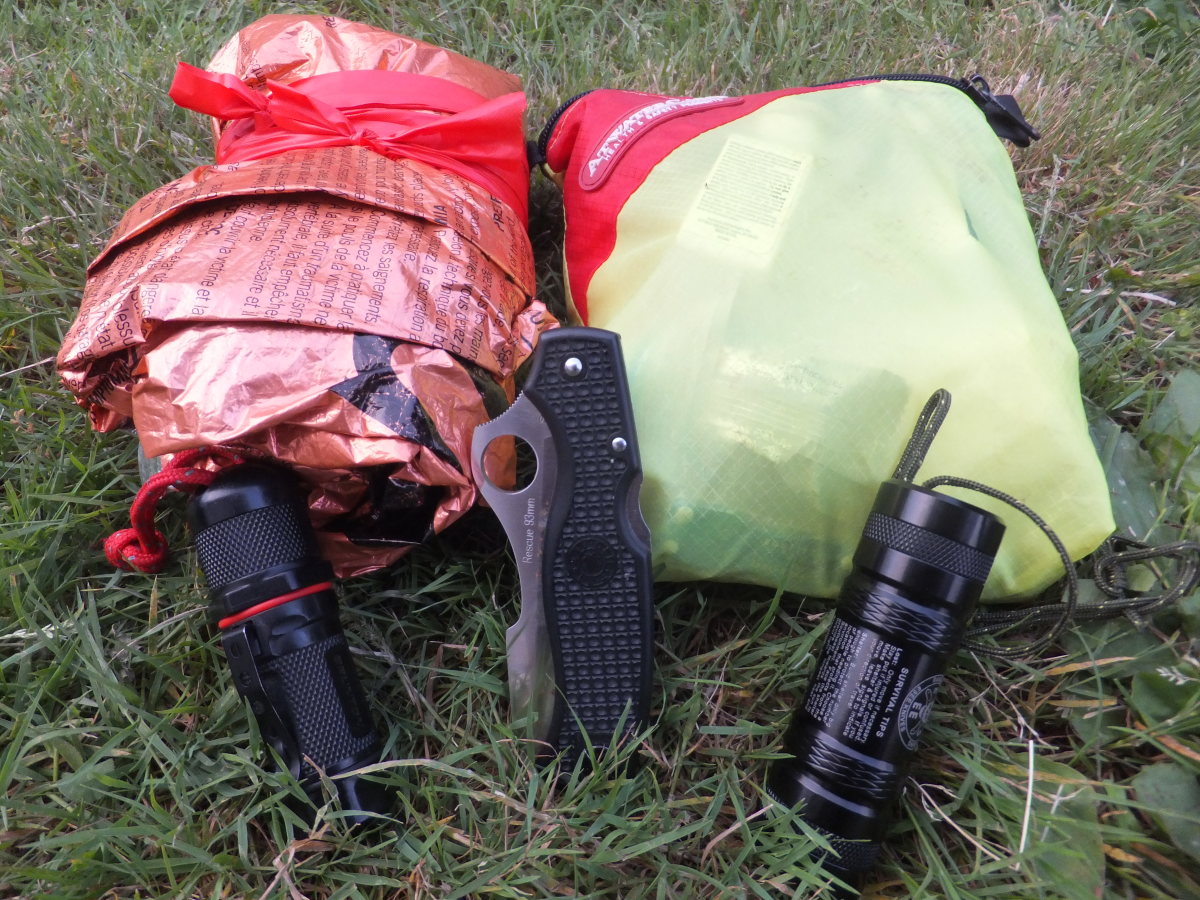How To Stay Safe From Bears In The Backcountry
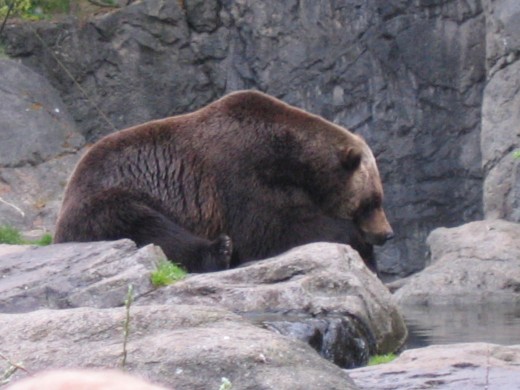
Encountering wildlife can be a thrilling part of any backcountry adventure, whether it be a day-hike with your family or a week long solo backpacking trip. Of all the wildlife people are concerned with, bears rank at the top of the list. While bear attacks are uncommon, actual predation by bears on humans is even more rare. Typically bears will notice you are present long before you encounter one, and they will take care to avoid you. However, habituated bears and food-conditioned bears do exist and can be very dangerous to uneducated hikers and campers. Your greatest tool to protect yourself from bears is your mind. With the proper education and precautions any trip into the backcountry can be a safe one.
The Two Kinds of Bears.
The two major groupings of bears are black bears and grizzly bears (also known as brown bears). Grizzly bears are the larger of the two, with males ranging from 400-700 pounds and 7-8 feet long. Grizzly bears are only found in the Rocky Mountains (Colorado, Wyoming, Idaho, and Montana), The North Cascades (Washington), British Columbia, and Alaska. Grizzly bears are easily identifiable by a large hump that protrudes from between their shoulders, right behind their neck. Black bears are somewhat smaller, with males ranging from 200-300 pounds and 5-6 feet long. Black bears can also be brown in color. Black bears can be found in almost every forested and mountainous region in North America. Both groups of bears are omnivores, with most of their diet consisting of berries, roots, grasses, scavenged carcasses, and fish. Both black bears and grizzly bears pack on the pounds in the fall in order to survive hibernation through the winter.
How To Avoid Encountering A Bear On The Trail.
While bears are not necessarily territorial, they do have an acute sense of 'personal space'. When that space is penetrated by a human the 'fight or flight' mechanism is triggered in the bear. Depending on the situation and the distance from the bear, the reaction can be quite different. For example, were you to come around a bend in the trail and see an adolescent male black bear lolling about in a meadow at 125 yards away, the odds are that he would run away when he became alerted to your presence. However, a female grizzly with cubs in that same situation and a lesser distance may see the situation differently and attack you. Black bears evolved in heavily forested areas where their cubs were able to climb trees to quickly escape danger. Grizzly bears evolved in more open areas (such as the Alaskan tundra) where trees were not readily available to their cubs. Therefore they are more conditioned to defend themselves, violently if necessary. Wherever you are traveling, your best bet to stay safe from bears is not to surprise them. Most often this can be achieved by making enough noise that they are alerted to your presence long before you actually encounter them. In open areas normal conversation will typically carry far enough for a bear's sense of hearing. In densely forested areas or when hiking near streams or waterfalls occasional shouting, clapping, or singing will suffice. Bear bells are an adequate option as well, although they are more effective if you are in an area where bears hear them often enough to associate them with humans.
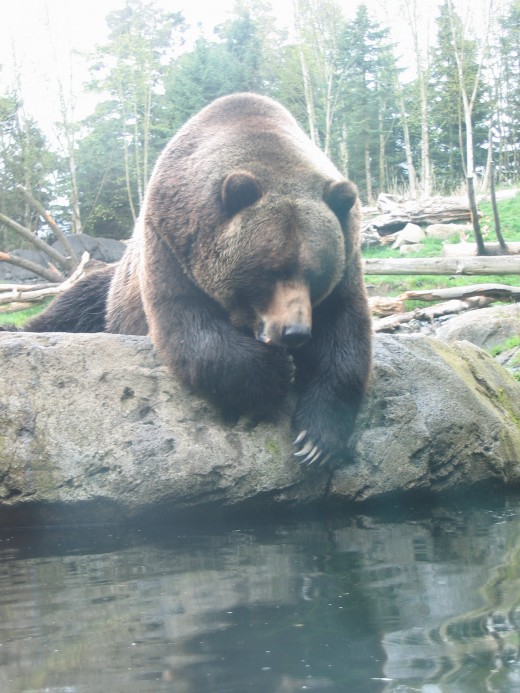
How To Avoid Encountering A Bear In Your Campsite.
The best way to remain safe in a bear encounter is to not have one in the first place. Nearly all bears are wary of humans and will go out of their way to distance themselves from people. However, bears are also very curious animals and highly driven by the search for food. Any scent associated with food and people can attract a bear from great distances. This includes sunscreen, toothpaste, fuel, lip balm, lotion, insect repellant, and deodorant. When you store your food you must be sure to store all of these items with it. You also do not want to have the clothes you cooked in with you inside your tent. Put these with your food and toiletries as well. You will want to store all of this from a tree branch at least 10 feet off the ground and 5-6 feet away from the trunk of the tree or any branch that a bear could climb on. This tree should be at least 100 yards downwind from your campsite. Choose a separate area to do all your cooking and eating that is also at least 100 yards from your campsite. Do not cook or eat in your tent. Do not bury your garbage. Clean all of your dishes. Bears tend to travel the paths of least resistance, if you have the choice when camping in bear territory, try to avoid setting up camp on or near a trail. Also search the area around your potential campsite for signs of bear activity such as scat, claw marks on trees, or digging.
What To Do When You Encounter A Bear.
The first thing to remember when you encounter a bear is DO NOT RUN. Running will most likely trigger a predatory response and a bear can and will outrun you. If you see a bear before it sees you it is best to wait for it to move on or take a wide detour around it. If you are spotted by a bear do not run. If it approaches, stand your ground. If you encounter a grizzly and it is moving toward you slowly talk in a normal voice while raising your hands above your head. Do not yell or make any fast, sudden movements. If you encounter a black bear and it is moving toward you make loud noises, bang a pot or pan, stomp your feet and clap your hands. Throw rocks at the bear to scare it away. Do not get closer than 10 yards. If any bear charges you stand your ground, more than likely it will stop short. If it stops then remain where you are for a few moments to see if it chooses to leave you alone and move on. If it does not move on, slowly step back away from the bear all the while maintaining eye contact. Stop moving if it seems to agitate the bear. If a bear's ears are laid back on its head it feels threatened, if they are forward it is showing aggression. Also, if a bear stands on its hind legs and blows air out of its mouth it is trying to identify your scent with its nose and tongue.
When Attacked Should I Play Dead Or Fight Back?
The only time you should play dead is if you are attacked during the day by a grizzly or a black bear sow that is defending her cubs. These attacks are typically defensive instincts. Lay on your stomach and clasp your hands behind your head with your elbows tucked against your ears. Bears play rough with their cubs and are capable of batting you around without inflicting serious wounds. More than likely the bear will stop in less than 60 seconds as soon as it realizes you are not a threat. When the attack stops, remain still for a few more minutes before moving. If you are attacked by a lone black bear or any bear that has come into your camp at night, you should fight back as vigorously as you can. These are typically predatory attacks. Focus your attack on the bears face, eyes, and nose. And, of course, you should fight back any time you feel the bear is actually trying to kill you.
Common Bear Myths Debunked.
1) Bears do not see very well. Bears have excellent vision. Although some studies may suggest that they are somewhat near-sighted, they are very good at picking out odd shapes and movements at a distance. Bears also have very good peripheral vision.
2) Bears cannot run downhill. This myth originated because bears have shorter front legs then they do back legs. Logic might seem to dictate they would be awkward running downhill. This has never been documented nor proven.
3) A menstruating woman will attract a bear. There has only been one verified case of a bear attacking a woman who was menstruating. That woman was also wearing cosmetics, perfume, sunscreen, and the clothes she wore when cooking. It is impossible to say what specifically attracted the bear, but considering how many women both work and recreate in bear country it is highly unlikely that a bear would be attracted by menstruation.
4) You can always hear a bear coming. Bears are predators and can be stealthy. They are capable of stalking prey over great distances. Although very rare, if a bear sees you as prey there is little chance you will know it until you are being charged.
The fear of being attacked by a bear should not prevent anyone from enjoying time in the backcountry. While a legitimate concern, bear attacks are very rare. Bears naturally avoid humans and the chance to see one in the wild is a privilege indeed. Great care should always be taken when traveling through bear territory. It is their home, humans are just visiting. With the appropriate precautions and knowledge, the backcountry can be shared by humans and bears alike, without any undesirable encounters.

